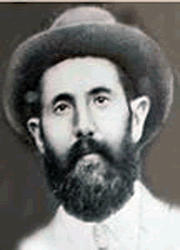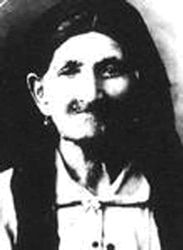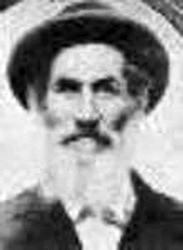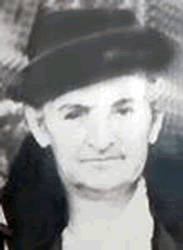dedicated to my good childhood friend Zila Dorfman ( the best student in our class) granddaughter of
Pnina Perla Patchornik (Lerer) and Baruch Moshe Patchornik
#ptchn-1:
Baruch Moshe Patchornik
Gender:
Male
Birth:
1873
Russia (Russian Federation)
Death:
May 18, 1941 (67-68)
Ness Ziona, Israel
Immediate Family:
Son of Avraham Patchornik ??????? and Ester Haya Patchornik
Husband of Pnina Perla Patchornik
Father of Yehoshoa Patzurnik; Rachel Rabinowitz; Chaya Feldman; Arye Patchornik; Sarah Zaltzman; Yitzhak Patchornik; Shulamit Forer; Batsheva Dorfman; Yehosuha Patchornik and Arie Patchornik « less
Brother of Yosef Mordechai Zemel (Patchornik)
#ptchn-2:
Feyge Leah Lerer (Feinstein)
Birth:
1823
Odessa, Odes'ka oblast, Ukraine
Death:
December 10, 1938 (114-115)
Ness Ziona, Israel
Place of Burial:
Ness Ziona, Israel
Immediate Family:
Daughter of Shmuel Ber Feinstein
Wife of Reuven Lerer
Mother of Moshe Aharon Lerer; Betzalel Lerer; Pnina Perla Patchornik; Masha Zamed; Shimon Lerer; and Tzvi (Harry) Lehrer «
#ptchn-3:
Reuven Lerer
Birth:
1832
Sabinow, Poland
Death:
1917 (84-85)
Ness Ziona, Israel
Immediate Family:
Son of Yeshayahu Zanvil Patchornik and Rachel Patchornik
Husband of Feyge Leah Lerer
Father of Moshe Aharon Lerer; Betzalel Lerer; Pnina Perla Patchornik
Masha Zamed; Shimon Lerer; and Tzvi (Harry) Lehrer « less
Brother of Yehuda Leib Patchornik; Avraham Patchornik
Sarah Bokser / Boxer and Shlomo Patchornik
#ptchn-4:
Pnina Perla Patchornik (Lerer)
Gender:
Female
Birth:
August 1874
Odessa, Russian Empire
Death:
January 10, 1966 (91)
Ness Ziona, Israel
Immediate Family:
Daughter of Reuven Lerer and Feyge Leah Lerer
Wife of Baruch Moshe Patchornik
Mother of Yehoshoa Patzurnik ???????; Rachel Rabinowitz; Chaya Feldman; Arye Patchornik; Sarah Zaltzman; Yitzhak Patchornik; Shulamit Forer; Batsheva Dorfman; Yehosuha Patchornik and Arie Patchornik « less
Sister of Moshe Aharon Lerer; Betzalel Lerer; Masha Zamed; Shimon Lerer and Tzvi (Harry) Lehrer
Reuven Lerer Patchornik (1832 -r 1917, Ness Ziona) was the first Jewish beekeeper in Eretz Israel and one of the founders of Ness Ziona.
Lerer owned a large agricultural estate near Odessa, and later replaced it with an agricultural estate in Israel. The estate, named "Nachlat Reuven" after him, was one of the three settlements that merged and formed the Ness Ziona colony that later became a city. Baron Rothschild and Benjamin Zeev Herzl visited his farm. He dealt with public needs and founded the synagogue of the colony.
Reuven was born in Sabinow, Galicia, to a family of ancient Carlin followers named Patchornik. As a child, in 1846 his parents, Isaiah Ginger and Rachel, entrusted him in southern Ukraine, near Kherson, to a German family named Lerer so that he would not be abducted for service in the Tsar's army. The boy adopted his foster last name. At the age of 18 he moved to Odessa. Lerer, who was a Chabad Kapost follower and a supporter of Zionists, worked as a fodder contractor for Russian army horses and made a living in his business.
In 1882, the German Templar Gustav Reissler lived in Odessa, who in 1878 purchased a plot in Wadi Hanin, where Ness Ziona is today and planted an orchard. The Holy of Holies made by Sharona The Templars. Reissler came to Odessa and there met Reuven Lerer. They made a barter deal: Lerer's estate on the Black Sea coast passed to Reissler, and Reissler's estate in Wadi Hanin is the 'Valley of the Roses', not far from the Mediterranean coast, "After all, Jerusalem will be seen from there,"he said to LererReuven's wife, Leah (Feiga), who had small children and cared for her childless father, Shmuel Bar Feinstein, refused to join him on his trip to Eretz Israel, and Reuven set off accompanied by his son, Moshe. The description of the estate, as he heard from Reissler, did not correspond to reality - the place had a neglected estate with only a Sudanese worker who belonged to the previous owner. He found in Wadi Hanin an abandoned structure, a ruined well and a neglected orchard. For about six months he restored the estate with the help of his son and the Sudanese and prepared the place for the absorption of his family. In Tammuz 1883 he returned to Russia with his son to bring his family: his wife, three children and younger brother. And determined that the two commandments were equal, but gave them the blessing of the way.
Following a lawsuit by Serpent Arabs to the sword near the estate, 486 dunams were taken from Meller [4], leaving him with only 1,418 dunams. He named the estate "Nahalat Reuven" after him. When the family arrived, he initially settled them among Jews, in Rishon Lezion and at the end of the rehabilitation, they settled on the estate. It was a lone Hebrew family among the Arabs in the area. Peace and friendship existed between her and her neighbors. Moshe Smilansky says that it was a coincidence that the distress at Beit Lerer reached a shortage of bread, and one night he arrived One of the neighbors and placed a sack of wheat near the house [2].
Wadi Hanin's soil was very fertile, and suitable for growing vegetables and planting. Water was also plentiful, but the proximity to the Robin River swamps caused illness among the family members. Due to lack of familiarity with the conditions of agricultural work and despite the life of austerity and austerity, the family lost the money which they brought from Russia. The thought that they could not lead an entire Jewish life, due to the lack of a prayer quorum and a room for children, also caused "the woman to weep bitterly and the man bit his lip." [2]
Beginning in 1887, welfare for the family appeared - new settlers arrived in Israel, who settled in Wadi Hanin, bought small plots of land from Reuven Lerer and planted vineyards on them. Most of them worked outside the place: in Rishon Lezion, in principle and even in Jaffa. He also called on the members of the old settlement and the members of the first aliyah to come to the place: "Whoever comes to a fertile plot of land and to establish a quorum in the settlement will come to me," and so he sold 320 dunams of his lands to the new settlers. His economic situation improved, and in 1858 the number of residents reached the minyan. The first settler in the colony who responded to Reuven Lerer's call was Golda Miloslavsky. Moshe Smilansky describes in his book that Lerer knew that as a woman she would not contribute to the quorum, but Shlomo Yaffa came after her. She was very close to her heart because she loved these flowers very much.
Because of the swamps the place was plagued with diseases, mostly fever, and out of 17 children born to Reuben and Feiga Lerer, only five reached adulthood.
Ness Ziona; The new settlers lived in a basement under Lerer's house. When some of them moved to the clay houses they built, similar to the houses of the Arab residents in the area, the basement became a council house and center for the residents. Among the first settlers in his house was Aharon Eisenberg, who was a man of spirit, and the basement became a center for intellectuals from Rishon Lezion and Jaffa. Next to it he built a blacksmith named Yelovsky a clay hut. The Arabs of the area would come to him to sharpen knives or iron the horses' hooves, and thus became a home for the Arabs of the area. His treatment of the Arabs did not help him and one night Arabs broke out and murdered him. It was the first sacrifice in the land of Reuben ].
The number of settlers increased, two-thirds of the land was sold to the first twelve settlers, and a first stone house was built on the site, shared by three peasants. During the time of Zeev Tiomkin, from 1890, hundreds of immigrants settled there.
Michael Halperin bought another piece of land in order to establish a colony of workers called Givat Michael.
The first Jewish beekeepers
Reuven Lerer and his son Moshe were the first Jewish beekeepers in the Land of Israel. Reuben Lerer worked with the bees only one day and then discovered he was allergic to bees. His son Moshe was the one who continued to take care of the bees. The pioneers of modern beekeeping in the country were members of the Baldensperger family from Jerusalem, Protestant Christians, citizens of France, who came to Israel in 1848 from the village of Baldensheim in Alsace (the father of the family, Felix Baldensperger, fled in the 17th century from northern Switzerland). The family members learned the craft of building detachable, lightweight and portable hives from two experts, the American Benton and the Canadian Jones, who visited the country in 1880. The hives during the citrus flowering period. In the decomposing hive you can take out the honey-filled challahs, get the honey out of them and return them to the hive without scattering the swarm. Traditional beekeeping, using clay pots, continued in the Land of Israel, especially in the Arab villages, even after they arrived in the Land of the Decomposing Hives.
Baldensperger, who set up hives in Reuben's territory, contracted a fever and traveled urgently to France, leaving the hives behind. His family members, who arrived late to Reuven's estate, persuaded Reuven Lerer to buy some of the hives, a deal that was conditioned on him also being taught the craft of beekeeping needed to operate them. Reuven's family members and especially his son Moshe (Reuven kept his distance from the bees because he was allergic to them), learned the craft, began to roam the earth with the hives and succeeded in their craft. Following Reuven Lerer, other settlers from Ness Ziona established modern hives, and Ness Ziona became the center of honey production in the Land of Israel. The colony and with it the coastal plain of Judea and the Sharon, were located in the heart of the citrus orchards area, and thanks to this, citrus honey was produced, which was known for its special color and aroma and was for nothing.
In 1930, the founding year of the organization of the Hebrew beekeepers in Eretz Israel, the Jews had 4,000 bee families: 2,000 in the Judean plain, 1,000 in the Samaria colonies - Hadera, Zichron Yaacov and the surrounding area and about 1,000 in the Jezreel Valley and the Galilee. Outside the Jewish sector, there were 25,000 bee families in pottery jars and several hundred in modern hives.
In the first years of beekeeping, a Jaffa Arab filed a lawsuit against Reuven Lerer for "the bees suck the citrus flower breast and harm the fruit." The Ottoman court in Jaffa ordered Lerer to pay large sums of compensation. With the help of the Austrian consul, an appeal was lodged with the Supreme Court in Constantinople. The matter was discussed for about two years, and the expenses of the legal process were multiple. Finally it was decided that the bees are not harmful to the fruit, but rather beneficial to it.In Ness Ziona, Reuven Lerer was involved in public business. He founded the synagogue in the colony. He was sent as a delegate to the Zionist Congress which convened in 1903, and was sorry when he heard about the proposal to establish a Jewish state in Uganda. At the end of his life he moved to Jaffa, but due to the expulsion of Jews from the city 5 children: Moshe, Zvi, Bezalel, Masha and Pnina.
Nino Avraham Pechurnik was a professor of organic chemistry at the Weizmann Institute of Science. His granddaughter Hannah Shalgi is a piano teacher whose many students have become renowned pianists. His granddaughter's grandson is Shmuel Boxer who was elected mayor of Ness Ziona in 2018.
From "Nachlat Reuven" only the well house remains today. Next to it, a ruined packing house was renovated and became a visitor center for guided tours. Reuven Lerer's house in "Reuven's Estate" was destroyed and nothing was left of it.
Yehoshua Patchornik and family




